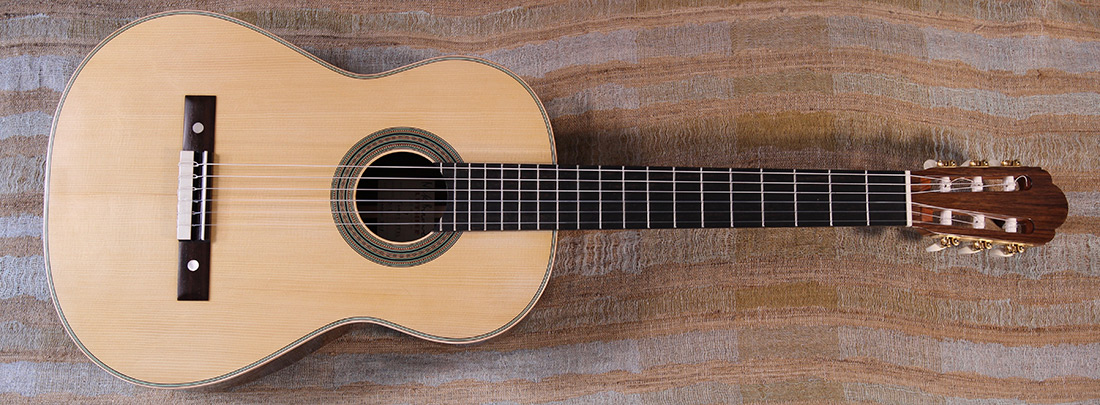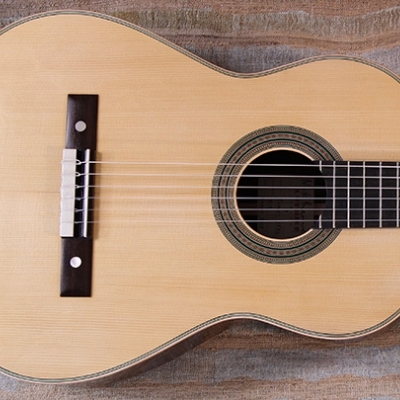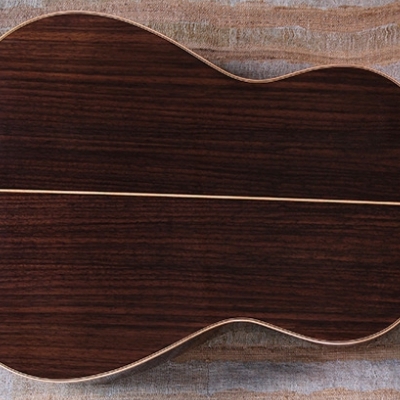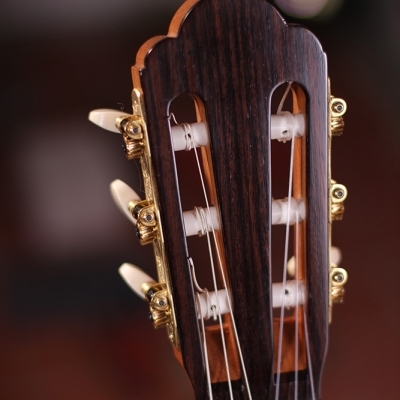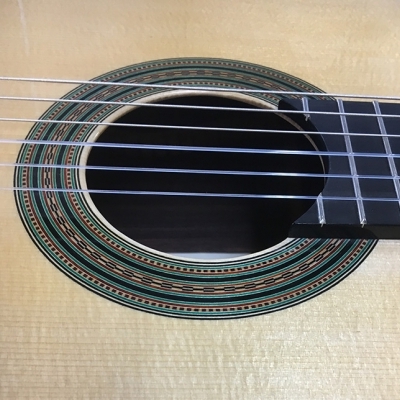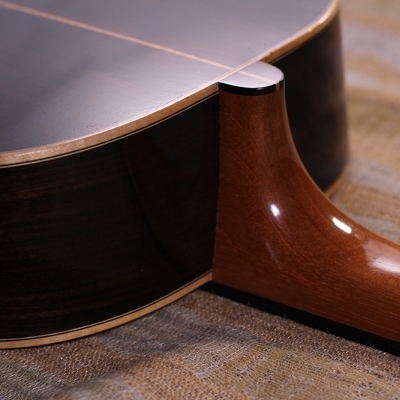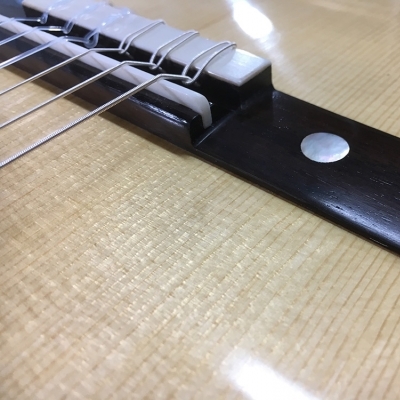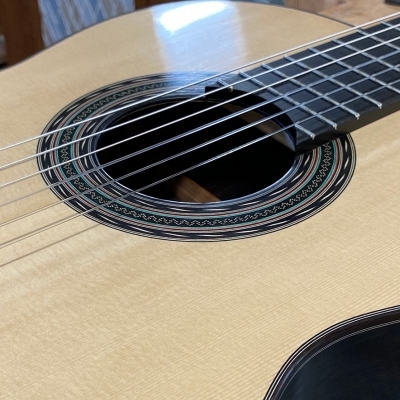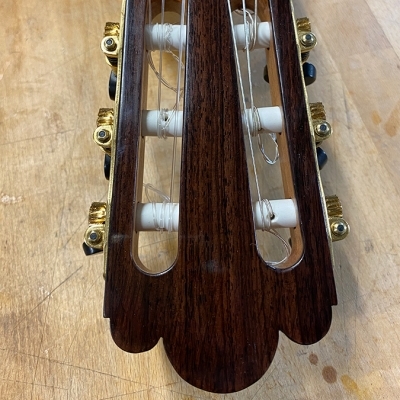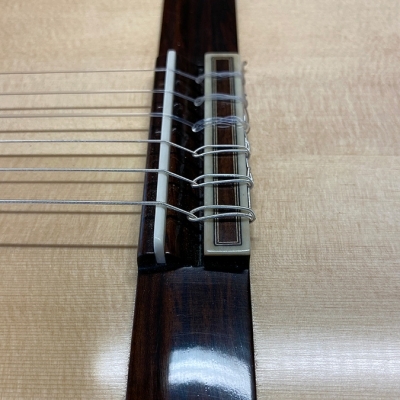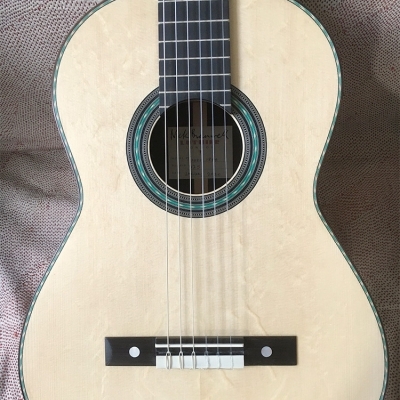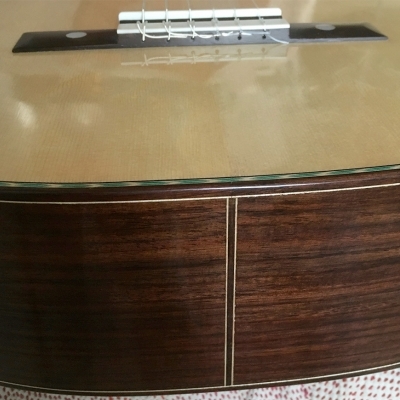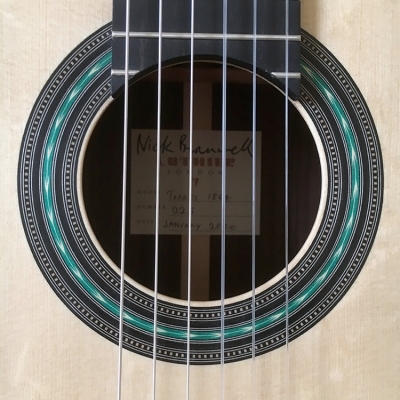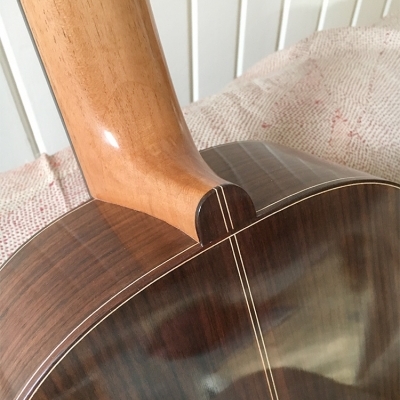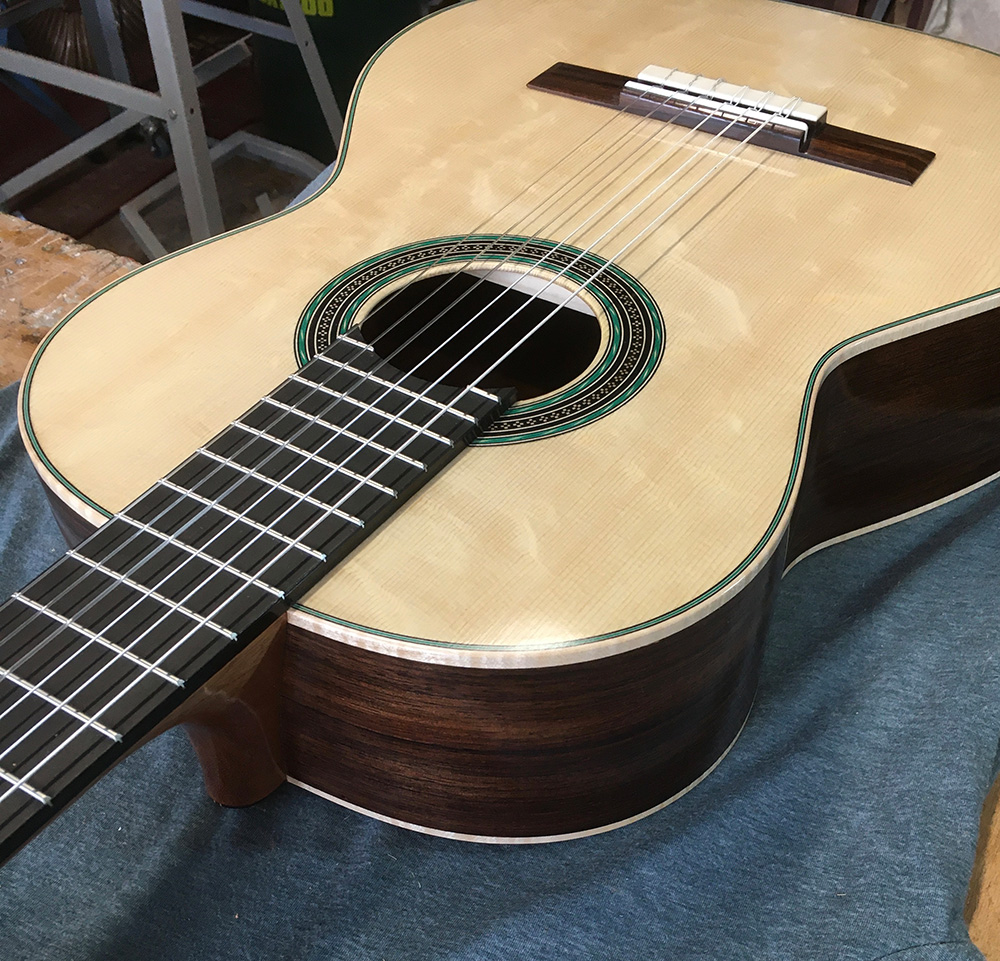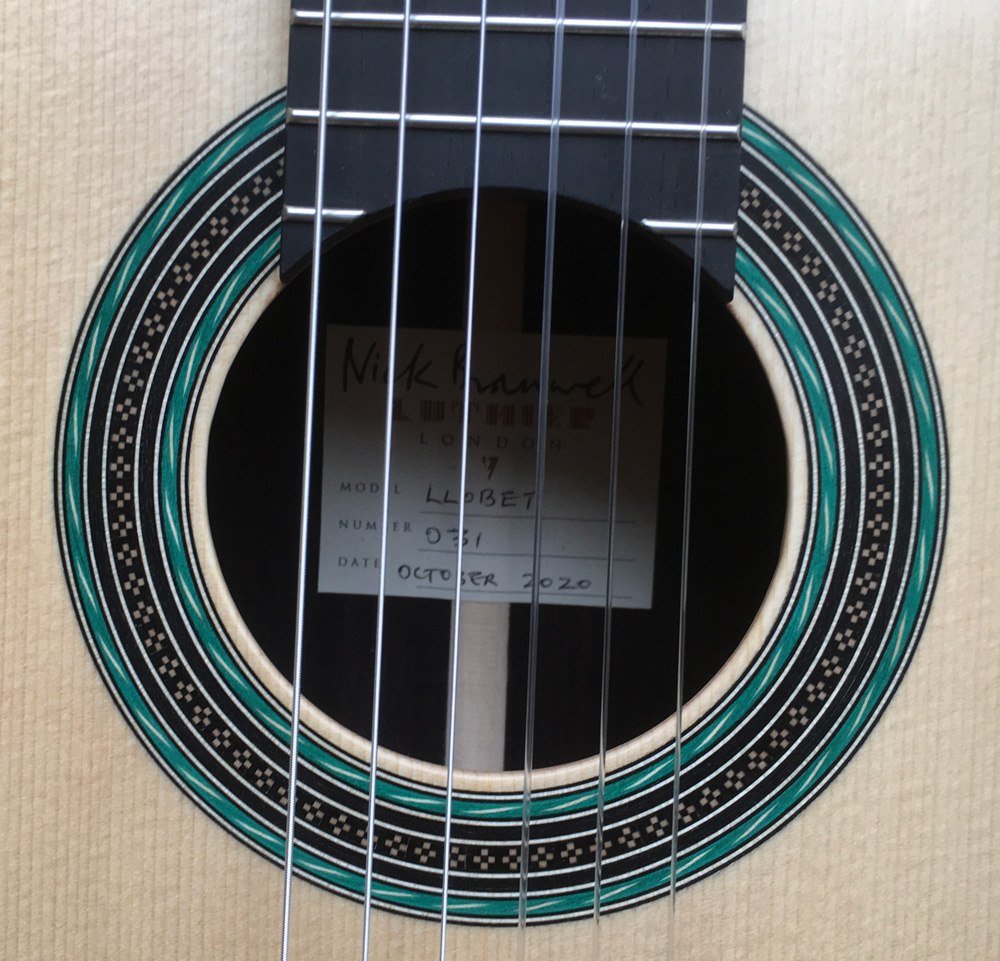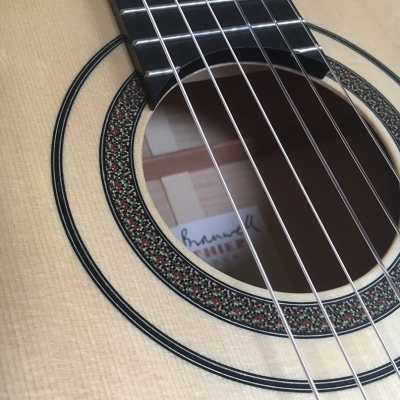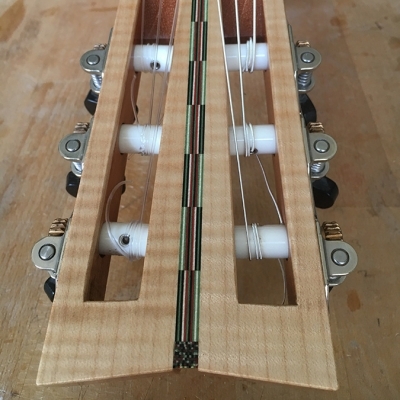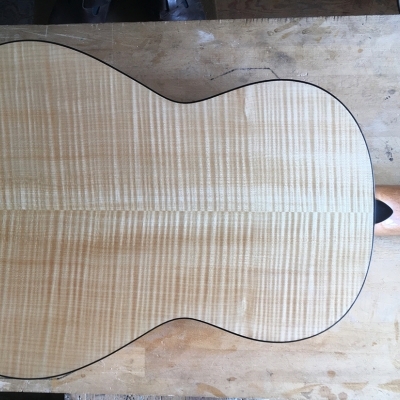CLASSICAL GUITARS
I normally make these with a standard 650 mm scale and with the neck 52 mm at the nut. A popular variation is a 640 mm scale with 51 mm at the nut. I fit Gotoh tuners as standard. I do a traditional French polish finish. It’s time consuming, rather vulnerable to knocks, scratches, sweat, etc. but it’s very beautiful and is often claimed to give the best sound, because it can be very thin and lets the top vibrate more freely.
Prices from £3150
I use two plantillas (ie shape and size), both based on Torres guitars. T1 is based on the SE114 from 1888 played by Tarrega - a medium size guitar. T2 is a slightly smaller guitar based on the FE19 from 1864. My original models are copies of these two guitars, but there are now many variations. A popular variation on T1 is the ‘Garcia’ model, based on guitars by Enrique Garcia, with an extra fan brace. Also popular is the T2 ‘Llobet’ model - it takes the rosette and other detail from an earlier Torres guitar (FE09) played by Llobet. My T3 model is the same size as the T1, but with my own styling, influenced by Louis Panormo. The T3 is also available with lattice bracing.
Dimensions:
- Upper bout 275 mm
- Waist 235 mm
- Lower bout 360 mm
- Body length 480 mm
- Body depth 95 - 87 mm
Zoe Barnett plays Leila Leila by Lily Afshar on a T2 Llobet (iphone recording).
Dimensions:
- Upper bout 265 mm
- Waist 222 mm
- Lower bout 354 mm
- Body length 477 mm
- Body depth 95 – 87 mm
Make an enquiry
If you would like to send us a message/ enquiry, please fill in and send the form below.




